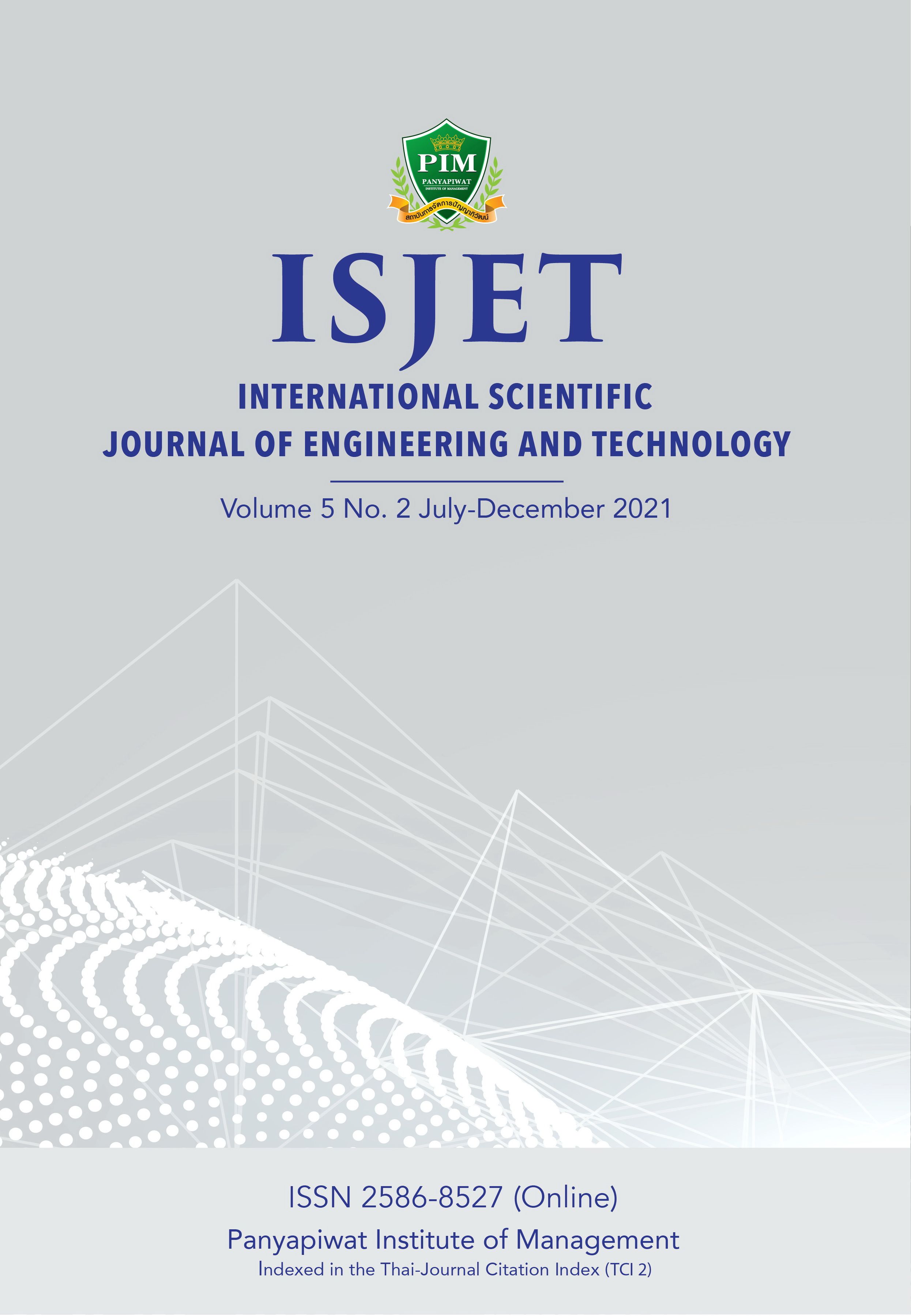Engine Oil Change Lead-Time Reduction Using Lean Management in A Commercial Vehicle Service Centre
Main Article Content
Abstract
This research aimed to investigate the root causes of wastes in an authorized service centre to improve its overall service lead time, especially the engine oil changing service for light commercial vehicles. The engine oil change service process was grouped into three phases, i.e. pre-checking, maintenance and post-checking. The lean management concepts such as value stream mapping, 7 wastes, ECRS method, brainstorming, etc. were utilized for finding issues and wasteful activities in the current process. Furthermore, the concept of dual mechanics was adopted to reduce service time in the maintenance phase. Overall, the ineffectiveness were classified into three groups, namely ineffectiveness from service advisor (SA), workshop management, and parts management. The appropriate recommendations were given for quickening the engine oil change process and being a prototype model for other authorized service centres in Thailand. The results showed
that the range of engine oil changing service time was reduced from 1.3-3.3 hrs. to 1.1-2.6 hrs. for
non-appointment customers and from 1.2-2.5 hrs. to 0.9-1.8 hrs. under the utilization of dual mechanics.
Article Details
เนื้อหาข้อมูล
References
Marklines. (2019, Aug 10). Thailand - Flash Report, Sales volume, 2018. [Online]. Available: https://www.
marklines. com/en/statistics/flash_sales/salesfig_thailand_2018
Marklines. (2020, Apr 10). Thailand - Flash Report, Sales volume, 2019. [Online]. Available: https://www.
marklines.com/en/statistics/flash_sales/salesfig_thailand_2019
MarketLine. (2020, Jun 30). Thailand - Car Manufacturing 2020. [Online]. Available: https://0-advantage-marketline-com.pugwash.lib.warwick.ac.uk/Analysis/ViewwasPDF/thailandcar-manufacturing-98454
J. L. Mfwaya, “Lead Time Management and Customer Satisfaction in the Telecommunication Industry in Kenya,” M.S. thesis, Dept. BA. Eng. University of Nairobi, Nairobi, Kenya, 2013.
S. Igor, S. Darko, and N. Aleksandar, “Setting the After-Sale Process and Quality Control at car Dealerships to the Purpose of Increasing Clients Satisfaction,” Journal of Applied Engineering Science, vol. 11, no. 2, pp. 81-88, May. 2013.
Y. Han and X. Zhu, “Research on Optimisation of Production Process and Warehouse Management System,” Revista de la Facultad de Ingenieria, vol. 32, no. 15, pp. 36-41, Sep. 2017.
T. Desai and R. Shrivastava, “Six Sigma - A New Direction to Quality and Productivity Management,” in Proc. The World Congress on Engineering and Computer Science, 2008. pp. 74-134.
S. A. Irani and J. Zhou. (2020, Jun 23). Value Stream Mapping of a Complete Product. [Online]. Available: http://www.leanmanufacturing-japan.com/Value%20Stream%20Mapping%20of%20a%20Complete%20
Prouduc.pdf
S. Nallusamy and M. A. Adil Ahamed, “Implementation of Lean Tools in an Automotive Industry for Productivity Enhancement - A Case Study,” International Journal of Engineering Research in Africa, vol. 29, pp. 175-185, Mar. 2017.
H. Abdulmouti, “Benefits of Kaizen to Business Excellence: Evidence from a Case Study,” Industrial Engineering & Management, vol. 7, no. 2, pp. 1-15, Jan. 2018.
N. Mandahawi, O. Al-Araidah, A. Boran et al., “Application of Lean Six Sigma Tools to Minimise the Length of Stay for Ophthalmology Day Case Surgery,” International Journal of Six Sigma and Competitive Advantage, vol. 6, no. 3, pp. 156-172, Apr. 2011.
N. Slack, A. Brandon-Jones, and R. Johnston, Operations Management, 7th ed., London, UK.: Pearson Education, 2013, pp. 4-713.


